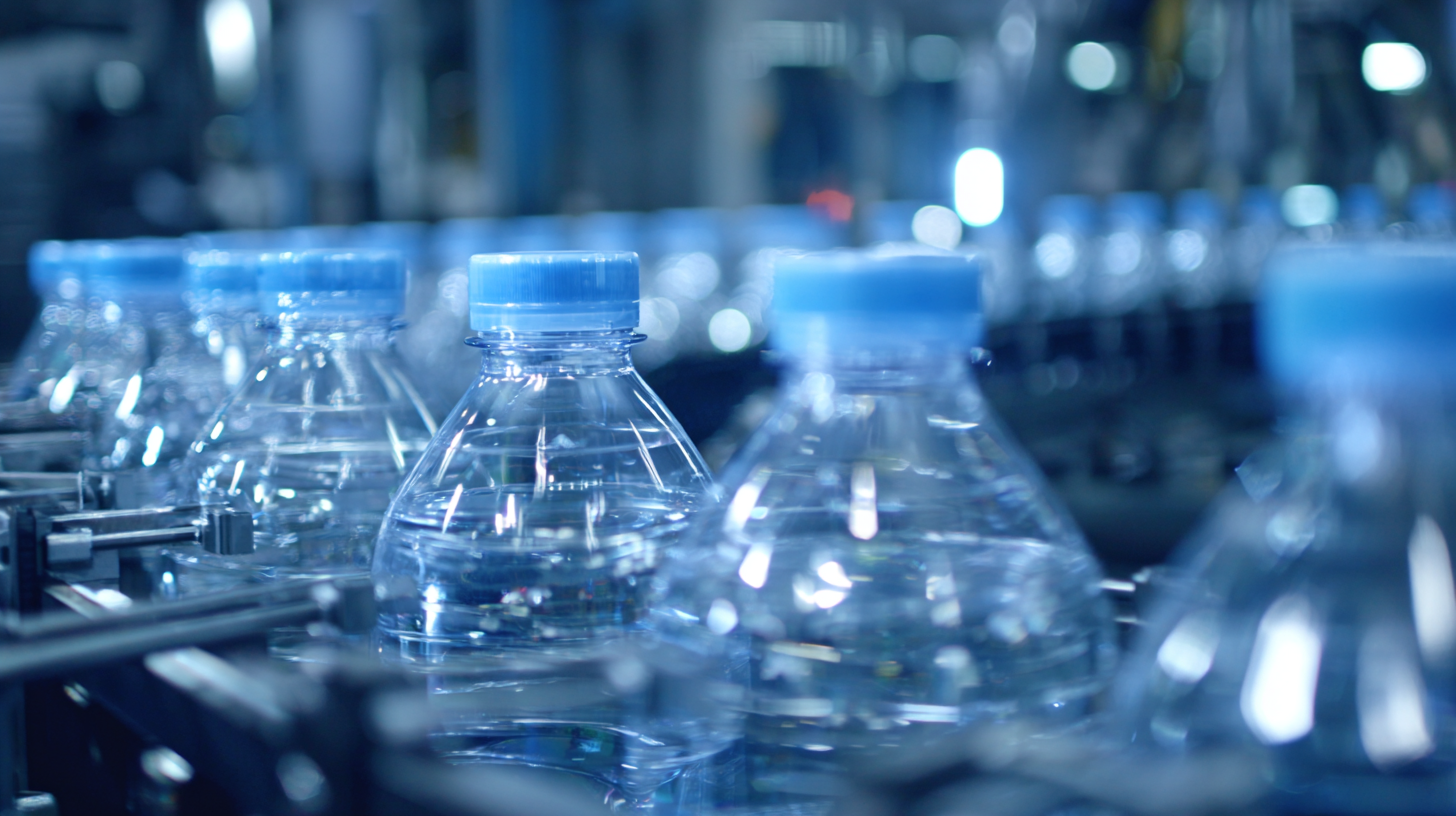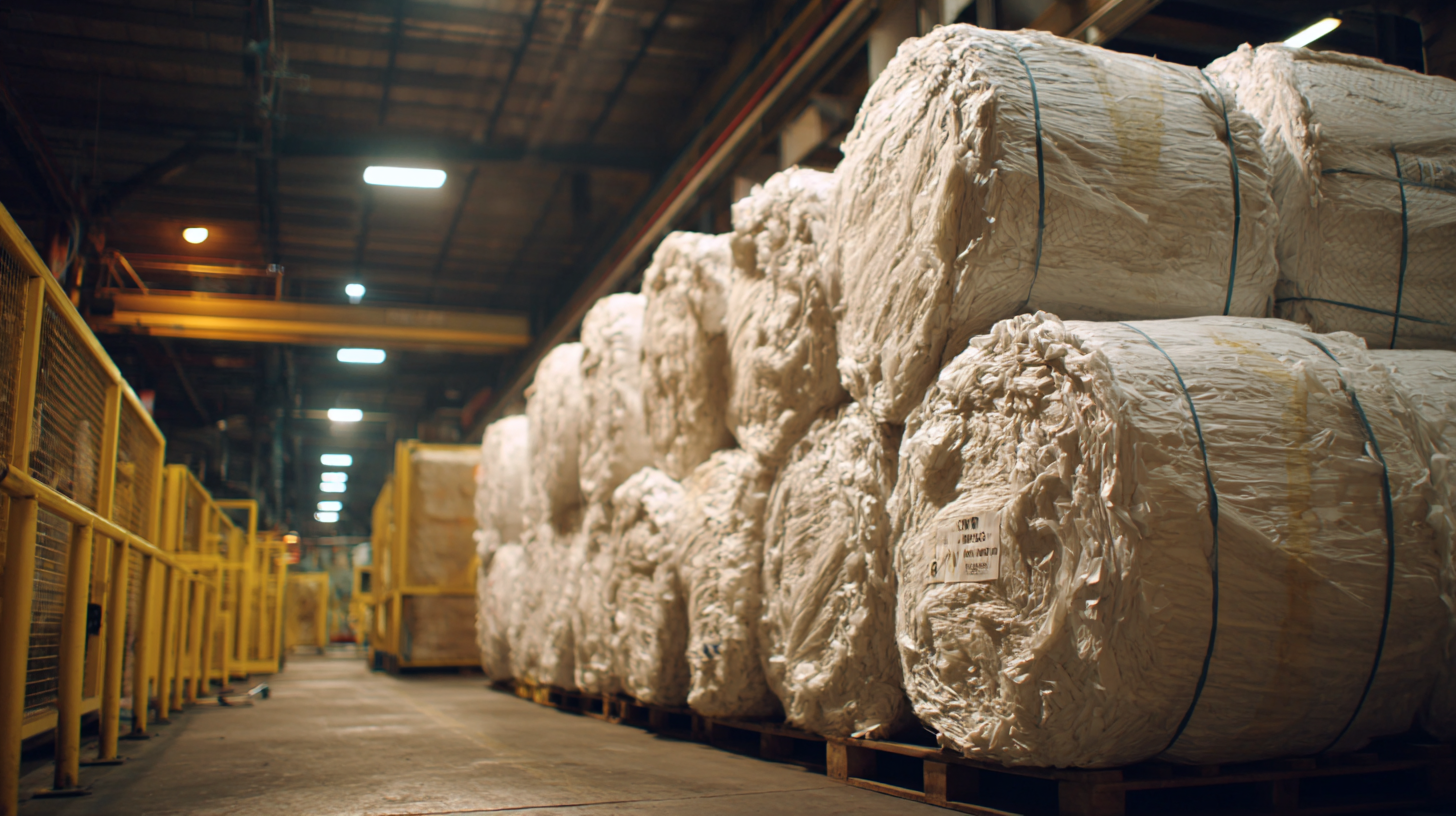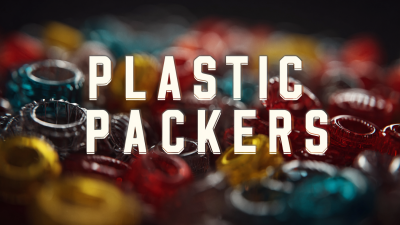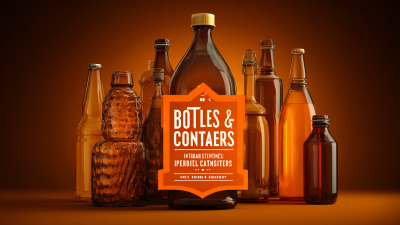Exploring the Benefits of Plastic Packers in Packaging Efficiency and Sustainability Solutions
In recent years, the packaging industry has witnessed a significant transformation as companies strive to enhance both efficiency and sustainability in their operations. One key innovation in this domain is the adoption of Plastic Packers, which have emerged as a viable solution to the ever-growing concerns surrounding traditional packaging methods. According to a report by Smithers Pira, the global market for sustainable packaging is expected to reach $400 billion by 2027, reflecting a robust annual growth rate of 5.7%. Plastic Packers offer numerous advantages, including reduced material usage, increased recyclability, and cost-effectiveness, making them an attractive option for businesses aiming to meet environmental standards and consumer demands. As organizations seek to navigate the complexities of modern packaging, understanding how to effectively implement Plastic Packers can serve as a crucial step towards achieving both operational excellence and sustainability goals.

Understanding Plastic Packers: Role in Modern Packaging Efficiency
Plastic packers have become essential tools in enhancing modern packaging efficiency due to their lightweight nature and durability. These packers streamline the packaging process by providing a flexible and robust solution that minimizes material waste. Their design allows for easy assembly and adjustment, accommodating various product sizes without compromising safety or protection during transit. This adaptability not only speeds up production lines but also helps businesses reduce labor costs and improve overall efficiency.
In addition to operational benefits, plastic packers play a pivotal role in sustainability solutions within the packaging industry. Made from recyclable materials, these packers contribute to a circular economy where resources are reused rather than discarded. Manufacturers are increasingly adopting eco-friendly practices by utilizing plastic packers that can be recycled at the end of their life cycle. This shift towards sustainable packaging not only meets consumer demand for environmentally responsible products but also positions companies as leaders in the effort to reduce packaging waste and minimize environmental impact.
Exploring the Benefits of Plastic Packers in Packaging Efficiency and Sustainability
Key Metrics: Evaluating the Environmental Impact of Plastic Packers
The environmental impact of plastic packers is a critical area of exploration, particularly as industries seek to enhance packaging efficiency while also addressing sustainability concerns. A vital aspect of this assessment includes evaluating the release of microfibres from textiles, which has been highlighted as a significant contributor to microplastic pollution. Understanding the factors that affect this release can help in developing strategies to minimize ecological risks and enhance the overall sustainability of plastic materials used in packaging.
Evaluation of packaging solutions must encompass metrics that measure their ecological footprint. By innovating materials and improving recyclability, companies are navigating the challenge posed by climate change to ensure their operations align with environmental sustainability goals. As businesses confront the implications of their packaging choices, the integration of metrics that assess the environmental influence of plastic packers will become essential for achieving both efficiency and sustainability objectives. This holistic approach can lead to a more responsible use of materials, ultimately benefiting both the environment and corporate responsibility initiatives.
Innovative Designs: Enhancing Sustainability in Packaging Solutions
Innovative designs in plastic packers are revolutionizing the packaging industry by marrying efficiency with sustainability. These advanced packaging solutions leverage cutting-edge materials that significantly reduce waste while maintaining product integrity. For instance, the use of biodegradable plastics and recycled materials in the design of plastic packers not only minimizes environmental impact but also meets ever-increasing consumer demand for sustainable options. This synergistic approach allows companies to enhance their brand reputation while actively contributing to a circular economy.

Furthermore, the design of plastic packers is evolving to incorporate features that optimize packing processes. Smart design elements such as interlocking features or customizable shapes enable more efficient use of space, reducing the amount of material required and lowering shipping costs. By prioritizing sustainability within the packaging lifecycle, these innovative designs not only benefit manufacturers with cost savings but also appeal to eco-conscious consumers looking for environmentally responsible products. As the industry continues to push the boundaries of traditional packaging, the role of inventive plastic packers becomes increasingly vital in achieving a sustainable future.
Cost-Benefit Analysis: Plastic Packers vs. Traditional Packaging Materials
 As businesses increasingly focus on efficiency and sustainability, the choice of packaging materials plays a crucial role in their operational strategies. A cost-benefit analysis of plastic packers versus traditional packaging materials reveals significant advantages. Plastic packers are lightweight, durable, and often more cost-effective in large-scale operations. While traditional options such as cardboard and glass have their merits, they often incur higher transportation costs due to weight and potential for damage during transit.
As businesses increasingly focus on efficiency and sustainability, the choice of packaging materials plays a crucial role in their operational strategies. A cost-benefit analysis of plastic packers versus traditional packaging materials reveals significant advantages. Plastic packers are lightweight, durable, and often more cost-effective in large-scale operations. While traditional options such as cardboard and glass have their merits, they often incur higher transportation costs due to weight and potential for damage during transit.
Tips: Consider integrating recycled plastics into your packaging solutions to further enhance sustainability while maintaining cost-effectiveness. Assess how much waste is generated by your current packaging methods and explore how plastic packers can reduce this footprint.
Moreover, the versatility of plastic packers allows for innovative designs that can better insulate products and extend shelf life. This not only appeals to environmentally conscious consumers but also can reduce spoilage and returns, translating to increased profitability. Businesses should evaluate their supply chains and customer needs to leverage the benefits of modern plastic packaging solutions effectively.
Tips: Conduct regular reviews of your packaging strategies and stay updated on innovations in packaging technology to remain competitive and sustainable in the market.
Future Trends: The Shift Towards Sustainable Plastic Packaging Practices
The shift towards sustainable practices in plastic packaging is becoming increasingly apparent, particularly within the food and pharmaceutical industries. With the bioplastics market valued at $3.76 billion in 2023 and projected to grow to approximately $3.98 billion in 2024, reaching $6.33 billion by 2032, a compound annual growth rate of 5.9% underscores the rising demand for eco-friendly options. This growth is driven by consumers prioritizing sustainability, leading businesses to innovate their packaging solutions.
Events like the 2025 ALLEPACK INDONESIA highlight these industry shifts, showcasing Southeast Asia's commitment to integrating efficient and sustainable packaging tactics. Companies are moving toward biodegradable materials and reusable packaging designs that minimize environmental impact while meeting consumer expectations. As industries evolve, the importance of implementing sustainable practices in packaging becomes clear, reflecting a broader global initiative toward reducing plastic waste and fostering a circular economy.
Exploring the Benefits of Plastic Packers in Packaging Efficiency and Sustainability Solutions - Future Trends: The Shift Towards Sustainable Plastic Packaging Practices
| Dimension | Description | Current Value | Future Forecast (2025) |
|---|---|---|---|
| Packaging Material | Percentage of sustainable materials used in packaging | 40% | 60% |
| Recyclability Rate | Rate of packaging materials that are recyclable | 30% | 50% |
| Consumer Awareness | Percentage of consumers aware of sustainable packaging practices | 55% | 75% |
| Investment in R&D | Percentage of companies investing in sustainable packaging R&D | 20% | 35% |
| Cost of Sustainable Packaging | Relative cost compared to traditional packaging | 10% higher | On par with traditional |
Related Posts
-

Ultimate Guide to Choosing the Right Plastic Packers for Your Business
-

Identifying Challenges in Choosing the Best Plastic Packers for Your Packaging Needs
-

Amber Bottles Shine at the Record Breaking 137th Canton Fair 2025
-

Innovative Trends in Best Bottles and Containers Industry 2025 Essential Checklist for Success
-

Unlocking Market Potential for Glass Droppers at the 138th Canton Fair 2025 Industry Trends and Insights
-

2025 Market Trends for Best Wide Mouth Glass Jars: How to Maximize Your Purchasing Strategy
